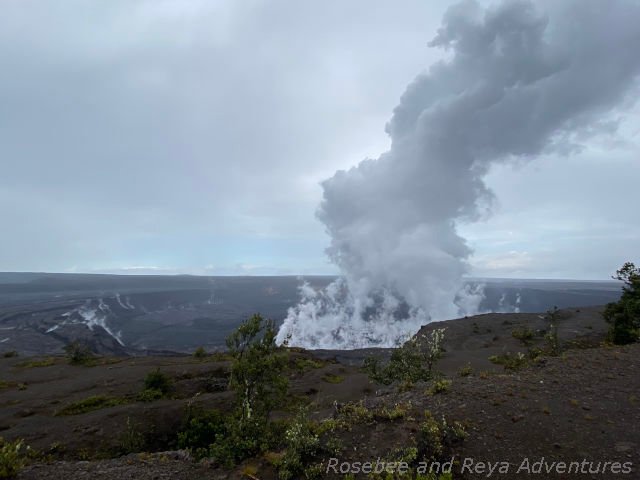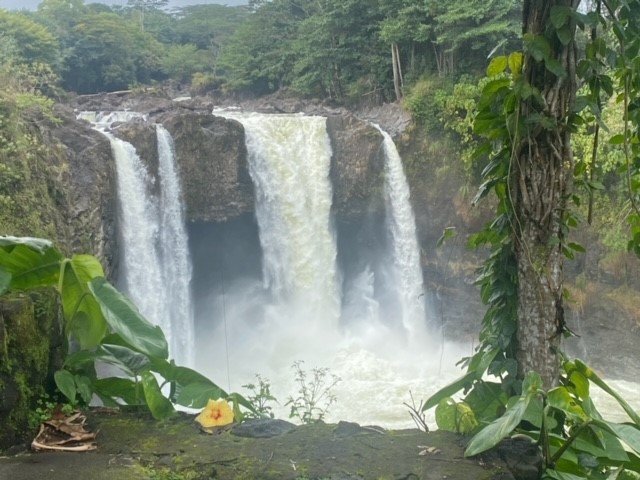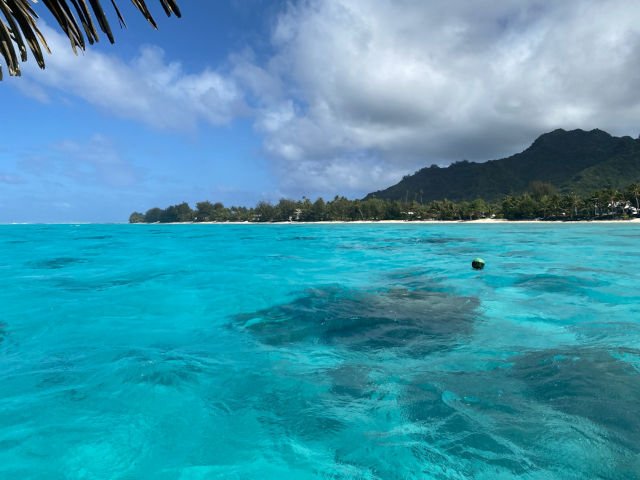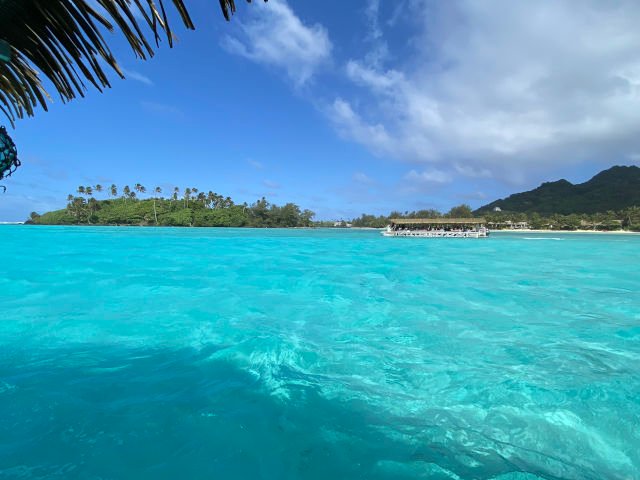Whether you’re a nature enthusiast, an adventure seeker, or simply looking to relax on an island paradise, you will find that the Big Island of Hawaii is the perfect place to visit. There are many things to do on the Big Island of Hawaii. The weather is very inviting and diverse. The Big Island is one of the few places where you can enjoy snowfall and then spend time swimming in the ocean. Hawaii Island is a magical place with many outdoor adventures. Keep reading to discover 24 amazing things to do on the Big Island of Hawaii!
The Big Island, Hawaii’s Tropical Paradise
When it comes to tropical paradises, Hawaii Island, also known as the Big Island, stands out as an incredible island to visit in the Pacific. Whether you are a first-time visitor to the Big Island or have visited the Big Island before, with its diverse landscapes, rich culture, and abundant outdoor activities, there’s something for everyone to enjoy on this stunning island. There are many stunning white sand beaches to visit on the Big Island. There are botanical gardens, hiking trails, breathtaking waterfalls to photograph, historical parks, and many other incredible activities.

The Weather on the Big Island of Hawaii
Regardless of when you visit The Big Island of Hawaii, you will notice it has a very inviting tropical climate. However, the weather on the Big Island varies across the island because of its varied topography and geographical regions. The Big Island’s diverse weather lends itself to offering diverse activities for its many visitors.
The island’s western side, including areas like Kona, enjoys a sunny, dry climate with warm temperatures year-round. With plenty of sunshine and limited rainfall, this region is perfect for beach lovers and those seeking a perpetual summer feel. This part of the island is a haven for beachgoers and outdoor enthusiasts. Towards the eastern side of the Big Island around Hilo, you will find a more lush and rainy climate. Frequent rainfall nurtures this side of the island’s rainforests and botanical gardens. The island’s higher elevations, such as Mauna Kea and Mauna Loa, experience cooler temperatures and occasional snowfall during winter.
The Island’s diverse climates make Hawaii Island the perfect destination where you can experience many weather patterns within a relatively small area. During the winter months, you can begin your day by enjoying snowfall on Mauna Kea or Mauna Loa and end your day swimming at one of the local beaches.
Getting around on the Big Island of Hawaii
Hawaii Island is the largest of the Hawaiian islands. Due to its size, renting a car is the best option for getting around Hawaii Island. Renting a car is relatively easy when arriving on the Big Island. At Kona International Airport, rental car agencies are located close to the terminal. Many rental agencies offer shuttle bus transportation to their car rental offices. You will find the shuttles across the street from the baggage claim area. If you are arriving at Hilo International Airport, the car rental agencies are located across the street from the terminal.
If you prefer not to drive, you can take a taxi or a rideshare from the airport to your hotel. Uber and Lyft are both available as a means of transportation on Hawaii’s Big Island. However, the more remote the area, the more difficult it can be to get a ride. Due to its size and the drive time necessary to enjoy all the sites on the Big Island, using rideshare or a taxi can get expensive. Ideally, having a rental car is much easier. You will be able to come and go without worrying about not having a ride back to your hotel.
Take a Day Trip to Hilo
On the eastern coast of Hawaii Island, you will find Hilo. Hilo is a hidden gem that promises a unique and authentic Hawaiian experience. Hilo has a distinct charm that sets it apart as a must-visit destination. What makes Hilo truly special is its inviting atmosphere that embraces visitors like old friends, lush and tropical landscapes, and its rich cultural heritage. Hilo’s genuine warmth and laid-back atmosphere make it an ideal place to slow down, connect with locals, and appreciate the beauty of the Big Island.
There are many sites to visit in and around Hilo, such as the Liliuokalani Gardens, an Edo-style Japanese Garden dedicated in 1917 as a tribute to Hawaii’s Japanese immigrants. Wailuku River State Park, where you will find Rainbow Falls and Pe’epe’e Falls. Both Rainbow Falls and Pe’epe’e Falls areas are located within a short distance from each other, allowing you to experience two different waterfalls on a single adventure and the Pana’ewa Rainforest Zoo, a great family-friendly activity that provides insight into Hawaii’s diverse ecosystems. You can read more about taking a day trip to Hilo by reading our blog on Hilo, Hawaii’s hidden gem – Top things to do when visiting Hilo.
Attend a Traditional Hawaiian Luau
A Luau is a Hawaiian party that includes entertainment, such as traditional Polynesian dances from the many island countries of Polynesia. A Luau normally includes a dinner feast, which is usually quite impressive. The feast served at a luau is typically served as a buffet dinner and includes traditional foods such as kalua pig, lomi lomi salmon, and haupia, among other dishes as well. Attending a luau in Hawaii, whether you are on the Big Island or a different island, makes for a wonderful experience. After dinner, you are treated to the many different dances of the islands of Polynesia, such as Hawaii, Tahiti, Fiji, Tonga, and New Zealand. Many luaus also have fire dancers, which are quite impressive.
There are several locations in the Big Island where you can attend a Luau. This list is a small sample of Luaus that you will find on the Big Island and is not all-inclusive.
- Voyagers of the Pacific Luau at the Royal Kona Resort
- Legends of Hawaii Luau at the Hilton Waikoloa
- Island Breeze Luau
- Hale Hoaloha Luau at the Mauna Lani
- Feast & Fire Luau at the Outrigger Kona Resort
Is Attending a Hawaiian Luau Worth it?
You will find as you look for a Luau to attend that luaus can be pretty pricey. But I would have to say that attending a luau is completely worth it, and you should attend one at least once in your lifetime. The traditional food served at Luaus is delicious. Luaus are a great way to learn about the many Polynesian cultures through the dances performed by the artists. The dances from the many islands represented are different and wonderful to see and the fire dancers are incredible. All in all, the time spent at a Luau can be a lot of fun and it is a great way to spend the evening with family.
Visit Hawaii Volcanoes National Park
Hawaii Island is home to Hawaii Volcanoes National Park. At Hawaii Volcanoes National Park, you can visit Kilauea volcano, Hawaii Island’s most active volcano, and witness the raw power of nature. At Hawaii Volcanoes National Park, you can also see the steam vents, explore the Thurston Lava Tube, hike various trails on lava fields, and visit the Petroglyphs and various craters along the Chain of Craters Road. You can drive the Chain of Craters Road to where it ends near the ocean and visit the Holei Sea Arch. During the evening, you can even catch a glimpse of the glowing molten lava of Kilauea if there is volcanic activity during your visit. Hawaii Volcanoes National Park is an incredibly unique National Park. A visit to Hawaii Volcanoes National Park is one of the best things to do on the Big Island of Hawaii.
The national park is located off Highway 11, approximately 30 miles from Hilo and 96 miles from Kailua-Kona. To learn more about the incredible adventures you can experience at Hawaii Volcanoes National Park, read our blog on The 8 Best Things to Do at Hawaii Volcanoes National Park.
Explore Akaka Falls and Kahuna Falls
A trip to Akaka Falls State Park offers visitors the opportunity to visit two picturesque waterfalls, Akaka Falls and Kahuna Falls. Akaka Falls is located off Highway 220, also known as Akaka Falls Road. There is ample parking available in the park. Visitors will have to pay a $10.00 fee for parking as well as an entrance fee of $5.00 per person.
The Akaka Falls State Park offers a scenic hike through lush rainforest to reach the breathtaking 442-foot Akaka Falls. The 0.4-mile hike is a moderate hike on a paved road located just past the parking lot. The trail has stairs in a few areas, making this park unsuitable for those in a wheelchair. You can skip walking the complete trail and go directly to Akaka Falls by going left at the start of the trail. If you go right, you will follow the complete trail and see both waterfalls.
If you decide to walk the complete trail, the first waterfall you will visit is Kahuna Falls. Kahuna Falls is 100 feet high, and while there is a lot of vegetation surrounding the area, Kahuna Falls is beautiful to see. The trail continues to Akaka Falls, and at 442 feet high, it is a magnificent waterfall to see. The cascading waterfall surrounded by vibrant greenery creates a picture-perfect setting for photographers. A visit to Akaka Falls State Park should not be missed.
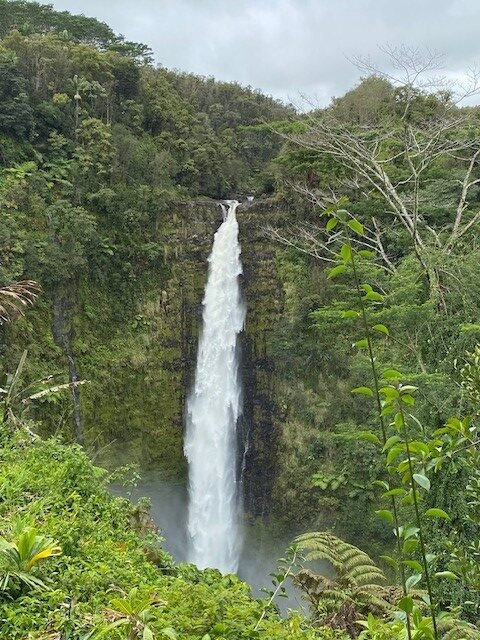
Drive the Scenic Route on the Big Island’s Old Mamalahoa Road
Old Mamalahoa Road is a beautiful scenic winding coastline route about 5 miles north of Hilo. Old Mamalahoa Road was once the main road that connected Hilo, Waimea, and the sugar plantations along the Hamakua coast. Nowadays, most people travel along Hawaii Belt Road, and unless their destination includes the tropical reserve or the Onomea trail, they can easily miss this beautiful scenic road.
We drove Old Mamalahoa Road on our way to the Hawaii Tropical Bioreserve and Garden. Along the way, we stopped at a beautiful scenic lookout and walked a trail overlooking Onomea Bay.
Visit the Hawaii Tropical Bioreserve and Garden
The Hawaii Tropical Bioreserve and Garden is a great place to experience the Big Islands’ diverse and lush flora. The Bioreserve is approximately 100 acres. Twenty acres of the Bioreserve make up the botanical gardens and visitor’s center., The Botanical Garden offers visitors a unique opportunity to explore many of the tropical plant species found on the Hawaiian Islands as well as from around the world. The garden has a large collection of vibrant and colorful tropical flowers, exotic trees, and rare plants. The Botanical Garden is a beautiful place to explore.
What sets the Hawaii Tropical Bioreserve and Garden apart is its remarkable variety of plant life and its commitment to education and conservation. Beyond its role as a scenic attraction, the garden serves as an educational hub where visitors can learn about the intricate relationships between plants and their ecosystems. Moreover, the garden actively participates in conservation efforts, aiming to protect endangered plant species through propagation and habitat restoration initiatives. This destination not only offers a serene and visually stunning experience but also fosters a deeper understanding of the delicate balance that sustains our natural world.
About the Bioreserve Trail
The Bioreserve is located in the Onomea Valley and it is built around the terrain of the Onomea Valley. Because of this, the Bioreserve can be steep in certain areas of the gardens. The trail at the Bioreserve is not ideal for wheelchair access or for those who require assistance with mobility. Canes and walking sticks are not a problem.
The Trail at the Bioreserve is 1.25 miles. You can easily spend more than two hours walking the trail. There is a lot to explore and see in the Garden. You should wear comfortable shoes as certain areas are steep. It is also a good idea to bring water, snacks, and insect repellent. The Hawaii Tropical Bioreserve and Garden is located on Old Mamalahoa Road, about 15 minutes north of Hilo.
Hike the Onomea Bay Trail
You will find a beautiful view of Onomea Bay if you decide to hike the Onomean Bay Trail. There are signs for the trailhead posed on Old Mamalahoa Road, so the trailhead will be easy to find. In fact, there are actually two trailheads to choose from. You can start the trail at the Donkey Trailhead, which is the steep section of this trek. Or you can start at the Onomea Bay Trailhead, the easier part of the trek. When driving northbound on the scenic route on Old Mamalahoa Road, you will come to the Onomea Trailhead. You will come to the Donkey Trailhead if you drive southbound on Old Mamalahoa Road.
Three connected trails make up this hike. The total length of all the trails is 0.6 miles or 1.2 miles round trip. The trails are not very difficult. Part of the trail is paved, but a large portion of the trail is not paved, including the Donkey Trail. It definitely helps to wear proper shoes and have bug spray with you as you hike the Onomea Bay Trail. And as always, taking water with you on your trek is a must.
Parking for the Onomea Trail is roadside, and there is no charge to hike the Onomea Bay Trail. When you reach the small bridge along the path, you will find that the trail cuts through the botanical garden. However, if you stay on the paved path on the bridge, you will remain on the Onomea Trail. There is usually a guard to help direct people to stay either on the path through the botanical garden for garden customers or on the path for the Onomea trail for hikers.
About the Onomea Bay Trail
If you start your trek at the Onomea Trailhead, you will come to the first intersection about midway. At this intersection, you can change your course of direction and go down the Alakahi Trail. The Alakahi Trail is a very short trail. The trail ends with a picturesque view of the area where the Alakahi Stream meets the ocean.
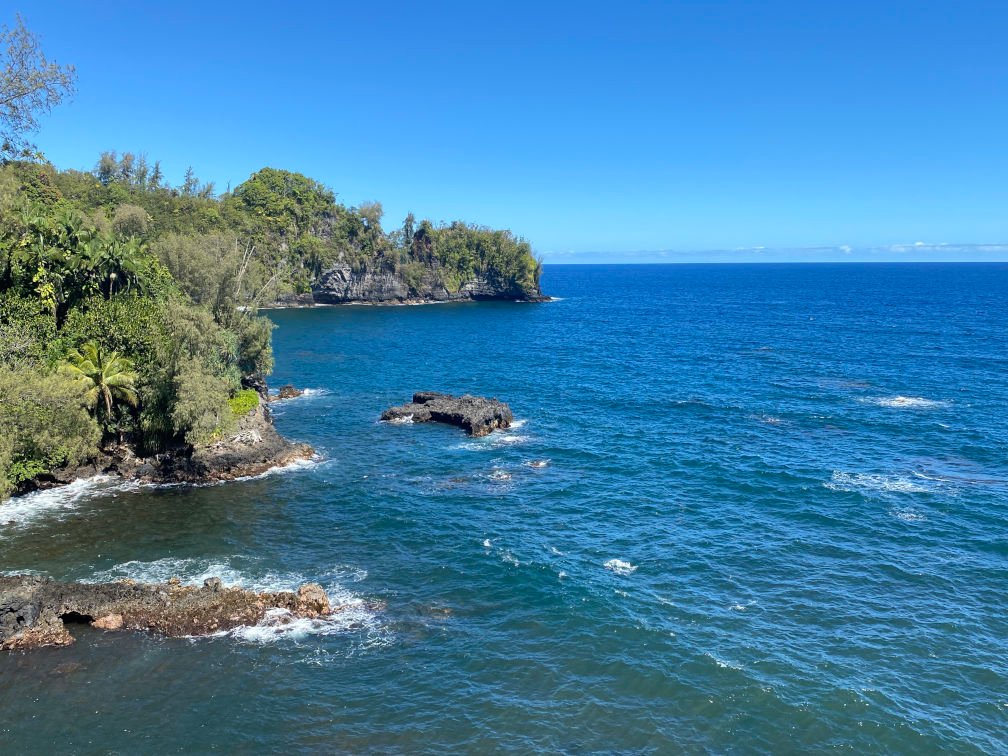
You can continue your trek to Onomea Bay by going back up the Alakahi Trail to return to the Onomea Bay Trail. As you walk the trail, you will come to the bridge by the Botanical Garden. At this point, you can continue to go straight on the path to Onomea Bay. Past the bridge, the trail area becomes rocky and can be slippery if there has been any rainfall. However, the reward at the end of this part of the trail is the view of the bay, which is absolutely amazing.
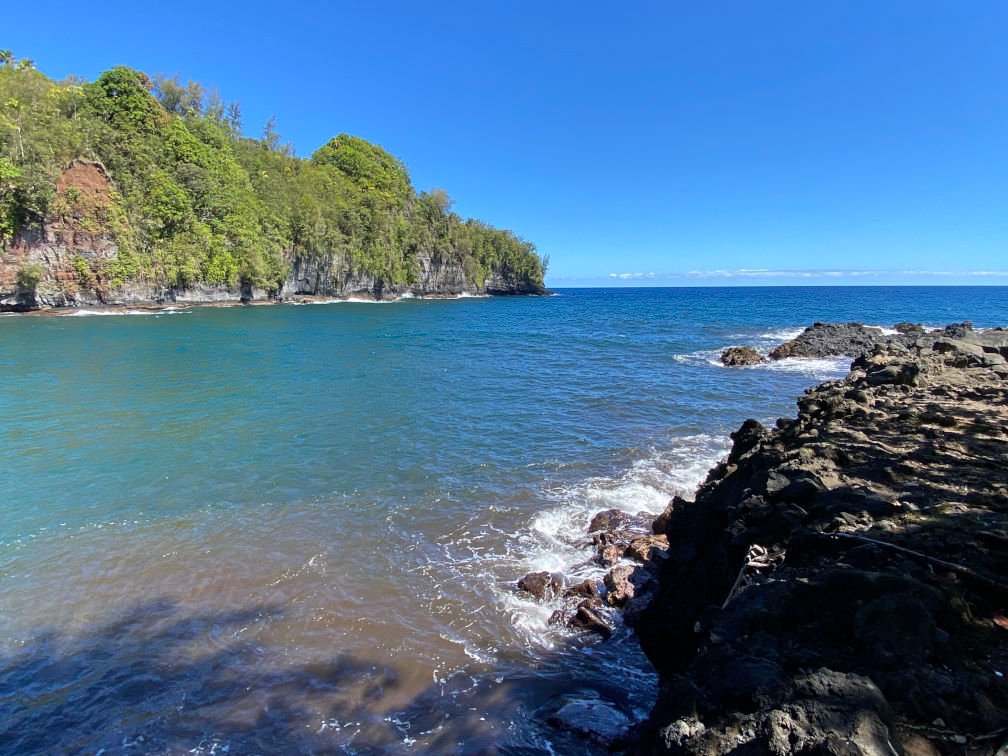
The Donkey Trail
The third part of the trail is the Donkey Trailhead. If you continue upwards on the Onomea Trail, you will be walking the Donkey Trail. This part of the trail will take you through a steep hill with lots of vegetation. Proper shoes are very important on this part of the trail because the trail is steep, full of vegetation, and can be slippery. The Donkey trail ends at a different section of Old Mamalahoa Road past the Bioreserve Garden. If you hike the Donkey Trail, you can walk back to your car using Old Mamalahoa Road or return to your car by following the trail back in the opposite direction.
The Onomea Bay trail is a trek that should not be missed. The views are amazing and picture-worthy. The trail is tranquil, peaceful, and not very difficult, especially if you omit the Donkey Trail. You can sit and rest on the lava rocks when you reach Onomean Bay. It is a great place to meditate, relax, and take in the beauty of Hawaii Island.
Spend Time Stargazing at Mauna Kea
Mauna Kea is one of the best places for stargazing. With minimal light pollution and a high elevation, you will have an unparalleled night sky view. You can make reservations to visit the Visitor Information Station. At the Visitor’s Station, You can look at the stars and planets through their telescopes. The Visitor Information Station is located at 9200 ft of elevation on Mauna Kea, making this a perfect spot for stargazing.
You can drive to Mauna Kea or if you prefer, you can go to Mauna Kea on a commercial excursion. There are several companies to choose from. The benefit of going on an excursion is that they will handle the drive to the summit. The companies that have excursions to Manua Kea are approved to conduct tours to Mauna Kea. You should make sure that you are with one of the pre-approved companies. The tours to Mauna Kea leave out of Hilo or Kona.
The summit of Mauna Kea is approximately 13,800 ft in elevation. For your safety, certain rules must be followed when visiting the summit. Due to the high altitude, there is a possibility of getting altitude sickness. Therefore, children under the age of 13 and those with certain medical conditions should not go beyond the Visitor Information Station. Also, those traveling to the summit should stop at the Visitor Information Center for at least 30 minutes to acclimate themselves to the altitude. If your visit to Mauna Kea does not include a visit to the summit, you will not miss out, as you will have an incredible view of the stars from the Visitor Center.
Go Snorkeling and Kayaking at Kealakekua Bay / Captain Cook Monument
Kealakekua Bay is a protected marine sanctuary with vibrant marine life and pristine waters. Due to its protected status, kayaking is only allowed if you are accompanied by a tour company that is permitted to conduct kayaking tours. Several tour companies conduct snorkeling tours in Kealakekeua Bay. Snorkelers should not go near or onto the shoreline in order to avoid damaging the reef. While snorkeling, you will see an abundance of different types of fish swimming among the colorful coral. Spinner dolphins and sea turtles also frequent the area. This is the perfect spot to bring along an underwater camera, as you will likely get some amazing underwater pictures.
Kealakekua Bay is located on the South Kona Coast. Captain Cook’s Monument is also located off the shore of Kealakekua Bay. To get to Kealakekua Bay, take the turn out for Napoopoo Road from Highway 11. The trailhead for Captain Cook’s Monument is a few feet from the turn out onto Napoopoo Road from Highway 11. If you want to go directly to the bay, follow the Napoopoo Road for approximately 4 1/2 miles to the end, where you will find the eastern shoreline.
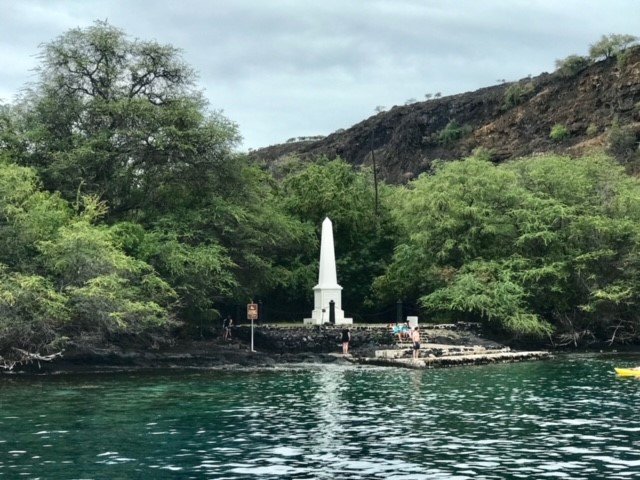
Go on a Manta Ray Night Snorkeling Excursion
Snorkeling with manta rays on the Big Island of Hawaii is a mesmerizing and amazing experience. It is one of the best Big Island adventures that you can participate in. The waters off the Kona coast are renowned for hosting one of the world’s most extraordinary gatherings of these gentle giants. At nightfall, snorkelers are treated to a surreal dance of mantas attracted to the area’s underwater lights, which draw in plankton, their primary food source.
During the manta ray snorkel, you float on the water’s surface while holding onto a floatation device. The manta rays are attracted to the light and eat the plankton in the area. As you float on the surface, the manta rays are relatively close to you. This is an incredible opportunity to see these majestic creatures glide through the water with their massive wingspan and breathtaking display of grace and beauty. This is a one-of-a-kind experience that should not be missed.

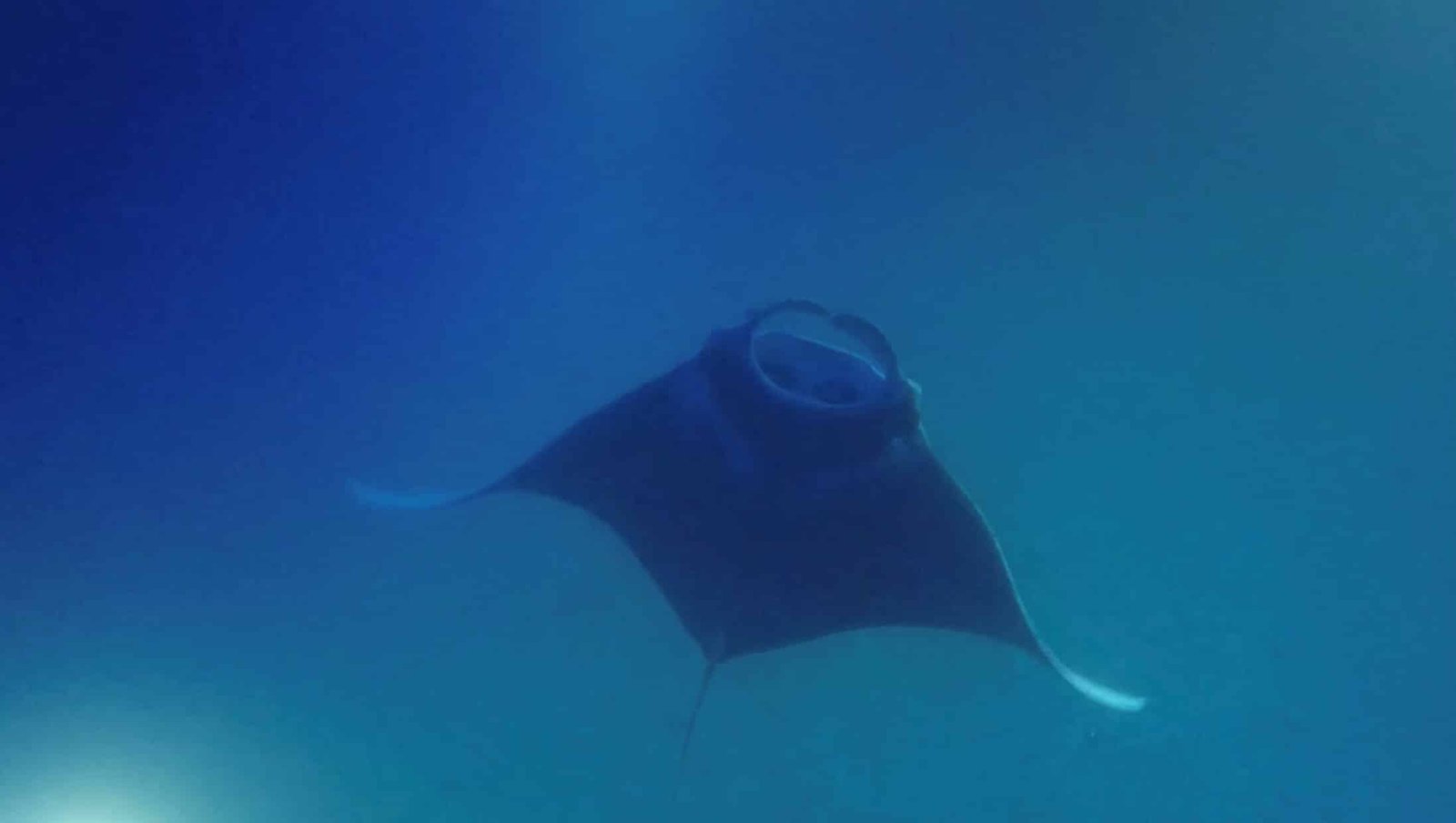
Sample some of the Big Island’s delicious Kona Coffee
No visit to the Big Island of Hawaii is complete without trying the local Kona coffee. Coffee in Hawaii is both grown and roasted on the island and is renowned for its rich flavor and smooth taste. You will find several coffee farms off Highway 11 and Napoopoo Road. Many coffee farms are open during the day for tasting and have their coffee available for sale. Many farms offer guided tours of their grounds, including a presentation on how coffee is grown and the production process that ends with you enjoying a freshly brewed cup of delicious Kona coffee.
Subscribe to our Travel Newsletter!
Receive our free Packing Guide with Bonus Cruise Essentials Checklist and Waikiki Travel Guide with Map when you subscribe.
Visit the National Historical Parks on the Big Island
You will find many sites of cultural significance on the Big Island. Three of these sites are National Historic Parks. The parks are preserved and protected and are rich in Hawaiian history. The National Historical Parks are a great place to learn about the history of Hawaii and the significance of each sacred location. By visiting the parks you will learn about the traditions of Hawaii and how the Hawaiian Islands were unified under King Kamehameha. The National Historical Parks on the Big Island are definitely worth a visit.
Puʻuhonua o Hōnaunau National Historical Park
Puʻuhonua o Hōnaunau, often referred to as the “Place of Refuge,” is a sacred and historic site located on the Big Island of Hawaii. This ancient Hawaiian sanctuary holds significant cultural and spiritual importance. The sanctuary served as a place of both physical and spiritual refuge for those who had violated kapu (sacred laws) and sought protection from punishment. Within its walls, individuals could find safety, redemption, and a chance to atone for their transgressions.
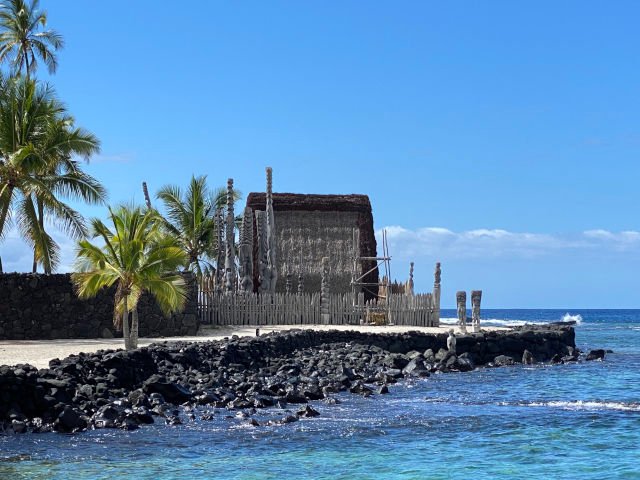
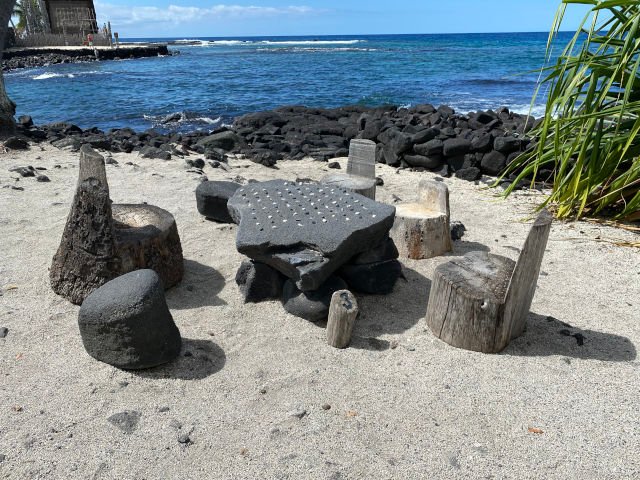
Puʻuhonua o Hōnaunau National Historical Park features intricately carved wooden statues, lava rock walls, temple platforms, and other architectural structures. These structures offer a glimpse into the rich cultural heritage of Hawaii’s indigenous people. Puʻuhonua o Hōnaunau stands as a reminder of the complex societal norms and practices that once shaped the island’s history. It also serves as a testament to the spiritual beliefs of the Hawaiian people. Today, as a National Historical Park, it offers both locals and visitors a chance to connect with Hawaii’s rich heritage and learn about its indigenous customs.
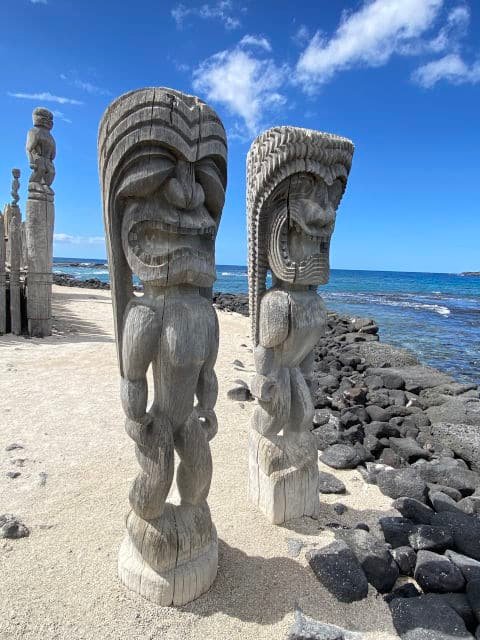
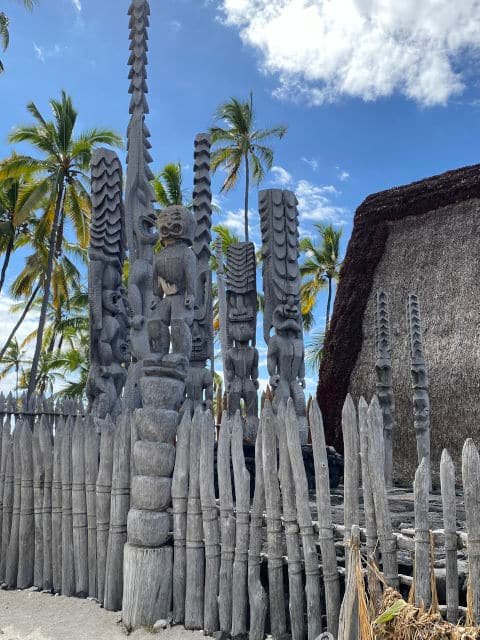
Puʻuhonua o Hōnaunau is located on Highway 160 in Hōnaunau. It is approximately 24 miles from Kailua-Kona. To get to Puʻuhonua o Hōnaunau, take Highway 11 south, approximately 20 miles. Between mileposts 103 and 104, at the Hōnaunau Post Office, turn right towards the ocean onto Hwy 160. Travel for another 3.5 miles and turn left at the Pu’uhonua o Hōnaunau National Historical Park sign.
Pu’ukohola Heiau National Historic Site
Pu’ukohola Heiau is a stone temple built above Kawaihae Harbor in North Kahala. The temple stood over 20 feet tall and took a year to build. About ten thousand men worked to complete the temple. The construction of the temple was ordered by King Kamehameha and was considered a Luakini Heiau, a sacred place where animal and human sacrifices were made. Pu’ukohola Heiau was dedicated to Ku’, a powerful war god, and was sanctified by a sacrifice of one of King Kamehameha’s foes.
After the sanctification of Pu’ukohola Heiau, King Kamehameha began his unification of the Hawaiian Islands. Many battles were fought, but by 1810, the Kingdom of Hawaii was established. Pu’ukohola Haeiau is a significant historical site and is significant in the unification of the Hawaiian Islands and the creation of the Kingdom of Hawaii.
Pu’ukohola Heiau is now a National Historic Site managed by the National Park Service. The park has a loop trail that is about 1/2 mile long. On the loop trail, you will see Pu’ukohola Heiau and other points of interest in the park. The site is located at 62-3601 Kawaihae Road and is located just north of Spencer Beach Park. The site is open every day, including all State and Federal holidays. You can visit the Pu’ukohola Heiau between the hours of 7:30 am to 5:00 pm.
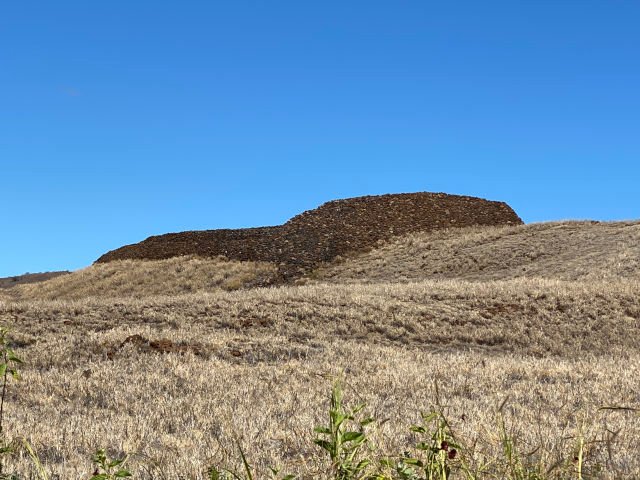
Kaloko-Honokohau National Park
Kaloko-Honokohau National Park is a 1,160 acre park located approximately 3 miles north of Kailua Village. There are many petroglyphs scattered around at Kaloko-Honokohau National Park and many trails to explore. The coastal trails are part of the Ala Kahakai National Historic Trail, which intersects with the inland trails at Kaloko-Honokohau National Park.
Ala Mauka Makai Trail
At Kaloko-Honokohau National Park, you can walk the Ala Mauka Makai trail, which starts at the visitor center and goes to Honokohau Beach. Along the trail, you will walk by Kii Pohaku, the petroglyph path. Take this side trail to see several petroglyphs along the path. The path is on a very noticeable boardwalk, built around the petroglyphs to preserve them. You will walk and view the petroglyphs safely from the boardwalk. The trail from the visitor’s center to Honolokau Beach and back is about 1.5 miles.
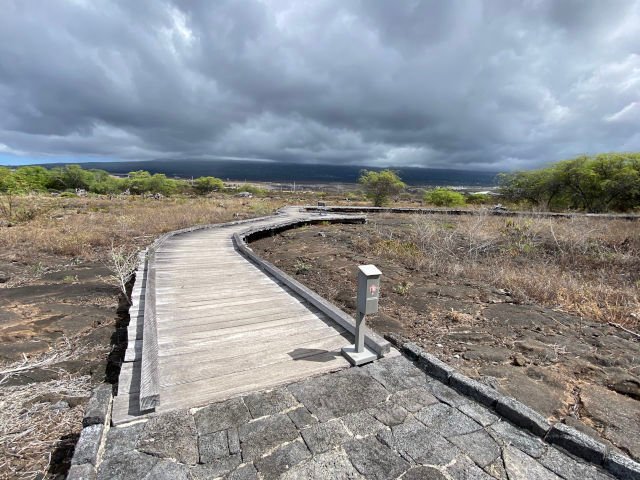
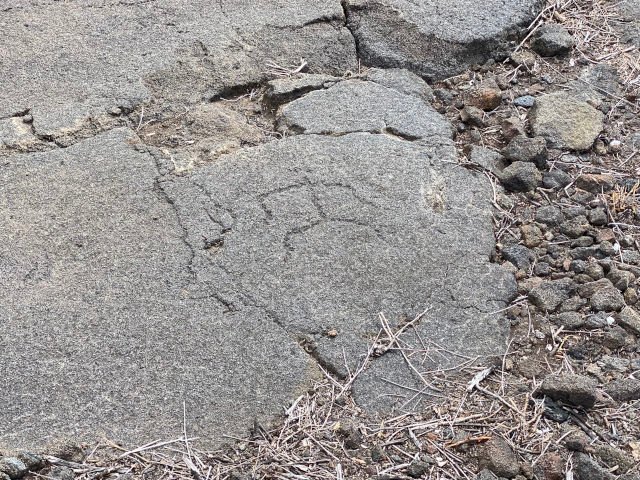

Once you reach Honolokau Beach, you will find a beautiful sandy beach where you can relax, snorkel, or go for a swim. You will more than likely see several green sea turtles as they tend to frequent this beach. If you do see turtles in the waters of Honolokau Beach, remember to keep your distance as they are protected animals. If you follow the coastal trail north from Honokohau Beach you will find the Aimakapa Fishpond. The Aimakapa Fishpond is approximately 0.9 miles from Honokohau Beach.
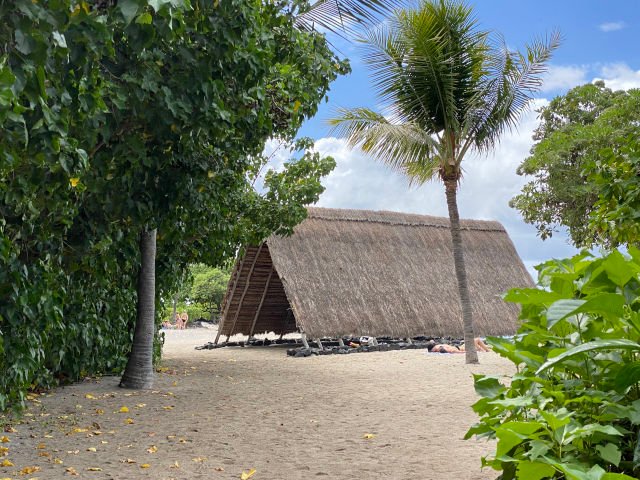
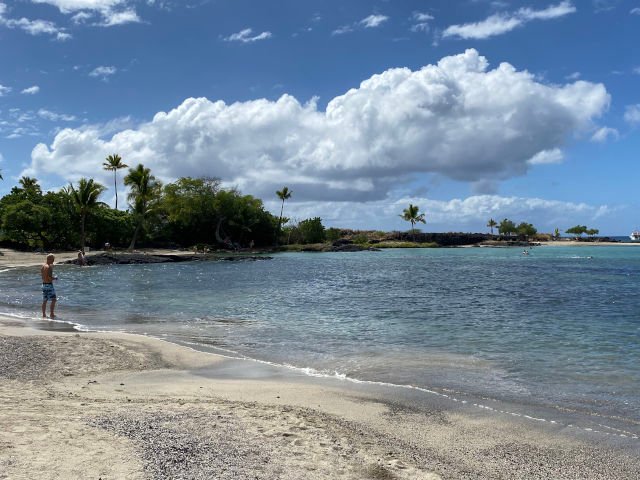
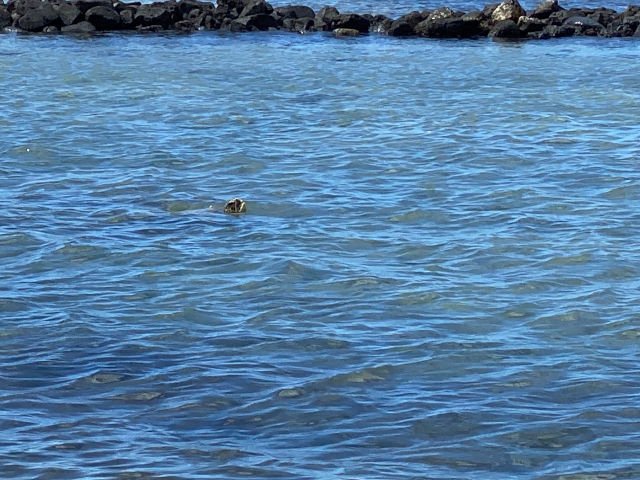
The Ala Hu’ehu’e Trail
The Ala Hu’ehu’e Trail takes you to the coastline over a rugged lava flow area. You will find the start of the Ala Hu’ehu’e trail about half a mile north of the visitor center. The Ala Hu’ehu’e Trail is 0.7 miles long from the start of the trailhead to the coast. The coastal trail in this area is part of the Ala Kahakai National Historic Trail. You can continue your trek by following the coastal trail to the Kaloko Fishpond, which is 0.3 miles further north.
The trails at Kaloko-Honokohau National Park are on a lava flow and tend to be uneven and rocky. It is a good idea to wear proper hiking shoes and have plenty of water on hand, as there is no shade along the majority of the trails. Luckily, as we discovered on our trek at the park, there is a water filling station at the visitor’s center where you can refill your water bottles.
Take in the Beauty of the Big Island at Waipi’o Valley Lookout
Waipi’o Valley is located on the Hāmākua Coast, about an hour north of Hilo. The drive from Kailua-Kona takes approximately one and a half hours. There is a small parking lot at the Waipi’o Valley Lookout, which has a 30-minute time limit. Restroom facilities are also available if necessary.
Known as the “Valley of the Kings,” Waipi’o Valley has dramatic cliffs, lush landscapes, and a black sand beach. Waipi’o, which means “curved water” in the Hawaiian language, was named after the stream that runs through the valley. The Waipi’o Valley lookout offers breathtaking views of the immense valley. The floor of Waipi’o Valley is approximately 2000 feet from the top of the cliffs and is about six miles deep. The Waipi’o Valley Lookout offers stunning views of the valley, including a small waterfall pouring out from the cliff. Waipio Valley is also the home of Hiilawe Falls, which drops 1,300 feet into the valley. While Hiilawe Falls is located on private land in the valley and not visible from the lookout, spectacular views are available from the lookout, and stunning photos can be taken of the incredible scenery.
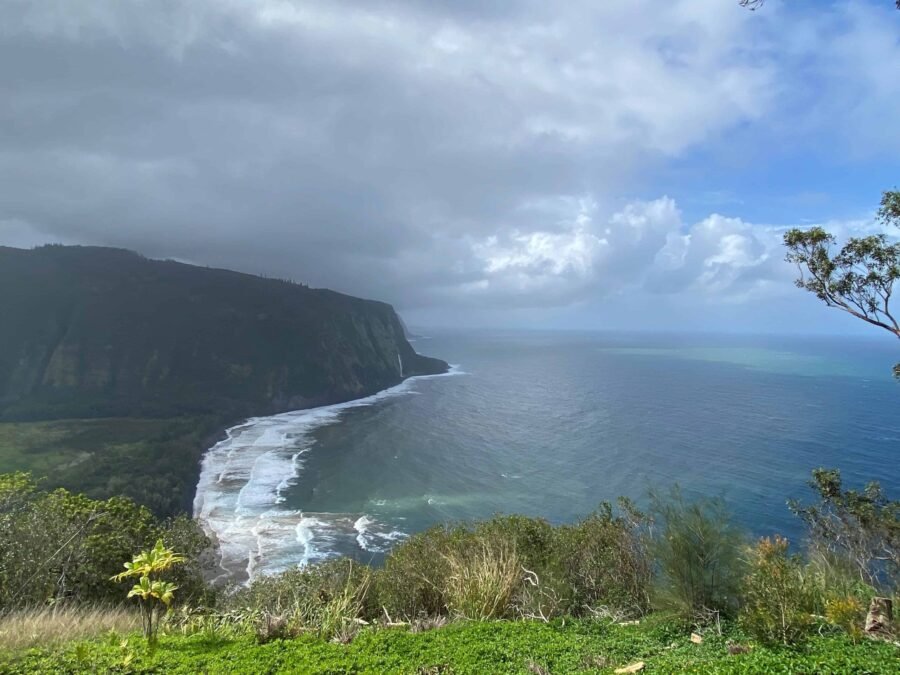
Visit Ka Lae, the Southernmost Point of Hawaii and the United States
Tucked away at the southern tip of the Big Island of Hawaii lies Ka Lae, also known as South Point. This area of the Big Island marks the southernmost point of Hawaii and the entire United States. At Ka Lae, as you stand on the rugged cliffs that overlook the Pacific Ocean, you will have an incredible view of the stunning coast.
Getting to Ka Lae can be an adventure in itself. To reach Ka Lae, travel on Highway 11 until you reach South Point Road between mile markers 69 and 70. You will travel about 12 miles to The Point on South Point Road. The first part of your drive will be on a paved two-lane road. You will drive past macadamia trees and past lava flows. This part of the drive is about 5 miles. As you get closer to The Point, the road turns into one lane and becomes rugged for about the last 7 miles of the drive. At certain points on the drive, you will need to be careful and move to the side to let oncoming cars pass. You will reach a fork in the road at the 10-mile mark. Stay to the right to reach Ka Lae.
Upon reaching The Point and walking to the shoreline, you will see why the drive to Ka Lae is worth it. The first thing you will see are the dramatic cliffs and the turquoise waters of the Pacific Ocean. This is a great place to take in the beauty of the Hawaiian coastline and take amazing photographs. It is also pretty amazing knowing that this is the southernmost point of Hawaii and the United States.
Hike to Papakōlea Beach, the Green Sand Beach at the Southernmost Point of Hawaii
If you are an experienced hiker, a narrow path leads down to the water’s edge, where you’ll find a historic green sand beach. The trail to Papakōlea Beach starts at South Point Road near makers 69 and 70. To get to Ka Lae, you go right at the fork. The parking lot for Papakolea Beach is towards the left. The hike to Papakōlea Beach is a moderate to strenuous 4.5-mile hike and can take about 3 to 5 hours, depending on the time spent on the beach. You should do the hike to the beach early in the day as it can get very hot. Hikers should be prepared with sufficient water, sunblock, a hat, and a light windbreaker in case changes in the weather occur.
Papakōlea Beach is a unique beach. It is the only green sand beach in Hawaii and one of only four green sand beaches in the world. The unique color of the sand is a result of olivine crystals which give the sand its green color. While the hike down to and back up from Papakolea Beach requires some effort, the reward of setting foot on this unique beach is well worth it.
Visit Punalu’u Bake Shop on the Southern Coast of the Big Island
You will find Punalu’u Bake Shop on the southern coast of Hawaii Island. Punalu’u Bake Shop is known for its delicious Hawaiian sweetbread made from a traditional family recipe. The bakery has been serving its sweet bread to both locals and visitors for many years. Besides its popular Hawaiian sweetbread, the bakery’s menu features and many other delicious baked goods. You will find Malasadas, a Portuguese-style donut offered with different fillings such as guava, haupia, lilikoi, and chocolate. The Malasadas are delicious and worth a try at Punalu’u Bake Shop.
Punalu’u Bake Shop is a great place to stop and grab a snack while on the southern coast of the Big Island. The delicious bakery items themselves are worth the trip to the bakery. the coffee is pretty good as well. One important item to remember is that the bakery items sell out. If you arrive at the Bakery late in the day, as we did on our first visit there, you will have a smaller selection of bakery goods to choose from. It is a good idea to get there earlier in the day so that you have a wide variety of goods to choose from and taste.
Punalu’u Bake Shop is located at 95-5642 Mamalahoa Highway (Route 11), midway between Kailua-Kona and Volcanoes National Park in Na‘alehu.
Visit Hapuna Beach State Park
Hapuna Beach is a popular beach to visit and is considered one of the best beaches on the Big Island of Hawaii. It has beautiful turquoise blue water and is a large, soft white sand beach. It is a great beach for swimming and snorkeling however, the currents at Hapuna Beach can occasionally be strong occasionally. You will see signs posted if the current is strong, and if so, you should heed the warnings and proceed with caution. While we were there, the waves were pretty calm, which made for great swimming and snorkeling. There are also lifeguards on duty during the day.
Hapuna Beach is located on the Kohala Coast and is a short walk from the Westin and about a 20-minute drive North from the resorts in Waikoloa. There is a restroom and outdoor rinse-off showers. Hapuna Beach parking is plentiful, with two large parking lots. This beach has one of the largest parking lots of the Big Island beaches we visited. The park itself is well-equipped with covered picnic tables in the grass area before the sand and some grills near some of the picnic tables. You will also find restroom facilities and outside showers to rinse off. There is a non-resident parking fee and a use fee per person.

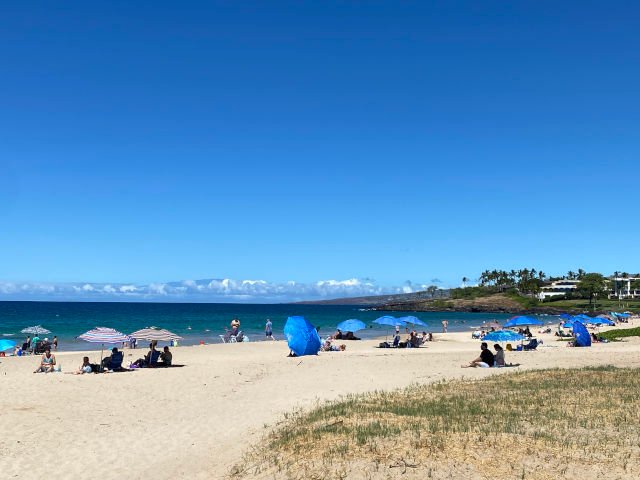
Visit Hawi Town on the Northern Coast of the Big Island
If you take a drive to the northern coast of Hawaii Island you will come to the easygoing, charming town of Hawi. Hawi was once a busy center as part of the Kohala Sugar Plantation. Since the sugar plantation has closed, things have slowed down. You will find that Hawi is a great escape from the busy tourist hubs of the island. Hawi provides a glimpse of the island’s laid-back and artistic side.
As you stroll down the main street of Hawi, you will see many historic buildings that line the road. You will see quaint shops, boutiques, and galleries that offer locally made Hawaiian crafts, artwork, and souvenirs. There are also a few coffee shops and restaurants to get a bite to eat. Hawi is a very welcoming town and worth visiting.
Stop By the Hawi Farmers Market
The Hawi Farmer’s Market is held on Saturday mornings from 8:00 am to 12:30 pm. The Farmer’s Market is held at the Kohala Village Hub in Hawi. You will find fresh fruits and vegetables, homemade treats, and handmade crafts. Local musicians will also entertain you during your visit to the Hawi Farmer’s Market.
Go on a UTV Adventure
If you are looking for an outdoor adventure, you will find just that in Hawi. You can take a UTV adventure with Kohala UTV Adventures. The UTV adventure is a guided 2.5 hour adventure through inner Kohala Hawaiian land. You will visit lush tropical lands, streams, and waterfalls. The tour is on private land. You will be one of the few lucky people able to visit this lush Hawaiian land as a guest of Kohala UTV Adventure.
Go on a Ziplining Adventure
Just a short drive up the Kohala Coast, you will find Kohala Zipline. At Kohala Zipline, you have a choice of two different zipline tours. The first is an exhilarating zipline tour with eight lines and six bridges. The second tour starts with a zipline tour with eight lines and six bridges and includes a picnic at a scenic lookout overlooking Pololu Valley and a refreshing swim in a private waterfall.
Visit the Pololu Valley Lookout
A visit to the Kohala Coast is not complete without a visit to the Pololu Valley Lookout. At the Pololu Valley Lookout, you will have an amazing view of the coastline and mountains of Hawaii. While the view alone is breathtaking, there is also a black sand beach at the bottom of the lookout that you can explore. You can take a short but steep hike to the black sand beach. The hike to the black sand beach is 0.6 miles, a relatively short hike. However, the steepness of the hike makes it a moderate hike instead of an easy hike. Care should be taken if there has been any rainfall, as the trail can get slippery. The water at the beach can be very choppy, with strong currents. You should stay close to shore if you decide to get in the water.
To get to the Pololu Valley Lookout, take Highway 270, Akoni Pule Highway, until it ends. This will be about eight miles past Hawi Town. There is a parking lot at the lookout but it is relatively small. If the parking lot is full, you can park roadside and walk to the lookout.

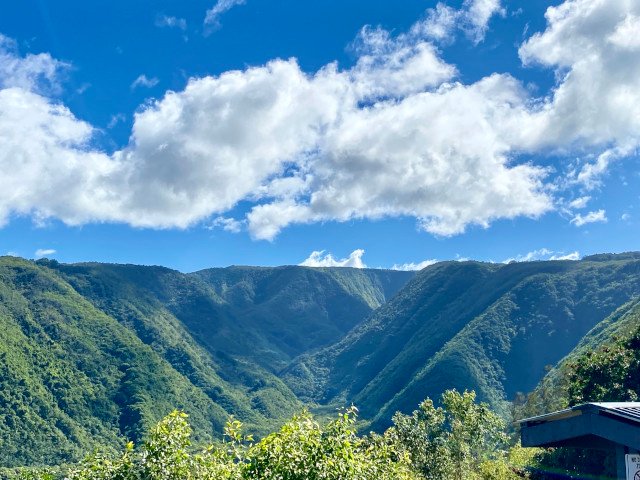
Why you should visit The Big Island of Hawaii
From exploring active volcanoes to lounging on pristine beaches, Hawaii Island offers an array of unforgettable experiences that cater to various interests. Whether you are an adventurer, a cultural enthusiast, a relaxation seeker, or are on a family holiday, you will find many amazing things to do on the Big Island of Hawaii. This tropical paradise will leave you with cherished memories and a longing to return again and again.
If you are interested in learning about neighboring islands, you can read our blog post about the Top Things to Do in Oahu and the Amazing Beaches on the Island of Oahu.
Popular & Related Posts
- Visiting the Polynesian Cultural Center in Oahu, The Ultimate Guide
- 24 Amazing Beaches on Oahu to Experience & Visit
- 18 Amazing Beaches on the Big Island of Hawaii
- 8 Best Things to Do at Volcanoes National Park
- The 11 Best Things to Do in Hilo on the Big Island of Hawaii
- 75 Top Things to Do in Oahu – The Ultimate Guide for Your Oahu Vacation
- 24 Family Friendly Things to Do in Oahu with Kids
- Visiting the Byodo-In Temple in Oahu – A Complete Guide
- Kualoa Ranch – Hawaii’s Jurassic Park Aventure Tour
- A Guide to Visiting the Dole Plantation in Oahu

